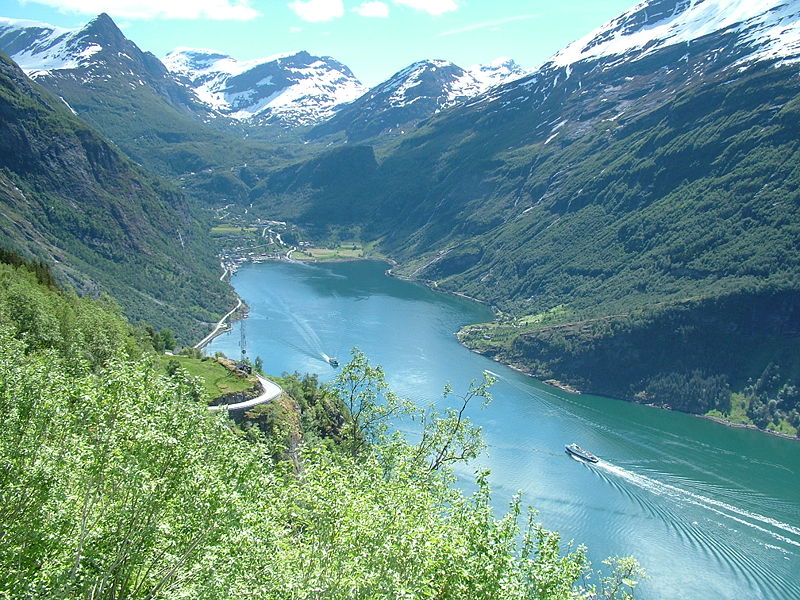

Location: Møre og Romsdal County Map
Geiranger Fjord in Møre og Romsdal Conty, Norway is one of the most popular and most visited fjords in the country. In fact it was designated as an UNESCO World Heritage Site. It is one of the branches of Storfjord (Great Fjord) cut by glaciers over a course of thousands of years. In addition to picturesque geological formations Geiranger Fjord has several beautiful waterfalls that flow down the sides of the deep natural canyon. One of the most famous fall include The Bridal Veil, names so due to its similarity to a light veil when the sun backlights the water falling from the cliff side. Another water fall is that of Seven Sisters on one side and another across the fjord that is called The Friar or the Suitor. Local legends claim that many centuries ago a man started pursuing these seven sisters. Poor women got so sick of hazing they asked spirits of water to save them. Ancient pagan gods had a strange sense of humour so they turned them into seven waterfalls. The man saw what happened and asked to join them for eternal life. The spirits of Geiranger Fjord complied with the request, but kept him separated from women.
The geological
development in the area took place during the last ice age. The
glaciers dug out deep fjords and formed high mountains. At its
deepest, the fjords are around 6-700 meters. You will also find
mountains that are up to 2000 meters high.
The area around
the fjord is mild, which makes fruit and berry production possible.
The winters are not very cold in the lowlands, yet there can be a
lot of snow, often with good skiing conditions, in the mountains.
The two most famous waterfalls in the
Geirangerfjord are Knivsflåfossene, better known as The Seven
Sisters and The Friar. The two waterfalls are located on opposite
sides of the fjord, and it is said that the Friar makes a cure for
The Seven Sisters on the other side.
Another waterfall in the
fjord is Brudesløret.
There
must have been settlement in the areas around the fjord from just
after the last ice age 10,000 years ago. During this time, the area
must primarily have been inhabited by reindeer hunters. Signs of
settlement in the Late Bronze Age 4,000 years ago have also been
found.
The area is currently divided between the
municipalities of Norddal and Stranda. The population of Norddal
municipality is about 1760 inhabitants divided into five small
settlements, Eidsdal, Fjørå, Norddal, Tafjord and the administration
center Valldal. Stranda municipality has 4540 inhabitants in the
villages Geiranger, Hellesylt, Liabygda and the administration
center Stranda.
Due to all the tourism connected to the
fjord, the population in these municipalities increases considerably
during the tourist season, especially in the summer. These mostly
consist of seasonal workers and people who have cabins and caravans
stuck.
Mountain climbers from Great Britain were
among the first to discover the fjord as an exotic destination in
the mid-19th century. As early as 1869, the first tourist ship
sailed into the fjord.
A shuttle service was reportedly
established in the area. The goal was to transport tourists up
Geirangervegen (built in 1889) to Djupvasshytta. In the beginning,
horse-drawn carriages were used, but eventually imported cars were
rebuilt to cope with local road conditions.
Since then,
several hotels and cabins have been built to provide shelter for the
growing tourism. The roads have also been improved and thus made it
easier to get to the tourist destinations. In 1936 came
Trollstigvegen, Nibbevegen in 1939, and Ørnevegen in 1954. The
latter is open all year.
The industry in the district is well
served by tourism. It is now estimated that there are about 600,000
tourists visiting Geiranger and Trollstigen during a summer.